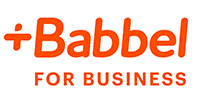Webinars
Webinar
The Impact of Human and Organizational Performance (HOP) on Safety Culture
9/5/24 12:00 pm to 1:00 pm CDT
Webinar
Hazard Communication Training: Does your training program meet OSHA’s requirements?
8/15/24 12:00 pm to 1:00 pm CDT
Webinar
Moving Beyond Ratings: Launching and Managing Sustainable, Resilient Supply Chain Programs
8/1/24 12:00 pm to 1:00 pm CDT
Webinar
‘Hears’ to Workplace Safety: How to Create a Sound Hearing Conservation Program
7/18/24 12:00 pm to 1:00 pm CDT











